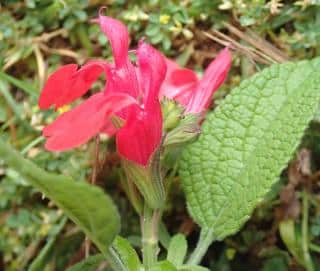

Graham’s sage is a cute shrub plant that bears flowers from spring to fall.
Graham sage key facts
Name – Salvia microphylla or grahamii
Family – Lamiaceae
Type – perennial
Height – 24 to 40 inches (60 to 100 cm)
Exposure – full sun
Soil – light, well-drained
Flowering – April to October
Pink or carmine red flowers make the Graham’s sage a cute ornamental plant.
Planting of Graham’s sage can indifferently take place either in spring or fall for specimens purchased in pots or containers.
Graham’s sage can be spread via cuttings at the end of summer on semi-hardened wood or via layering in spring or fall.
If sowing from seed, sow Graham’s sage during the month of March under a cold frame.
Graham’s sage tolerates the sun well and will survive long bouts with no rain, but will be most beautiful if watered regularly.
If growing Graham’s sage in pots, don’t wait for the soil to be completely dry before watering again; simply water often but in moderate amounts.

Proper pruning at the end of winter will give the plant some vigor, reshape it and enhance the blooming of the Graham’s sage.
Adding flower shrub fertilizer granules will significantly increase the blooming.
If you feel your Graham’s sage is growing sparse or stops blooming, water evening or morning every day, in moderate amounts.
Prepare your Graham’s sage for winter by tipping a thick mound of mulch around its base to protect from the cold.
Grahamii sage is one of the most ornamental and flower-bearing shrub sages.
Unlike other sage varieties like medicinal sage, it isn’t edible.
It grows in the wild in the South in the United States (Arizona), as well as in Central America, more specifically Mexico.
Its name microphylla comes from Greek and means “little leaves”. Its leaves, incidentally, smell delicious when they are crumpled.
Note also that Graham’s sage is one of the most hardy sage varieties, since it resists freezing down to 5°F (-15°C).
Graham’s sage is perfect to set up a low flowered hedge. Additionally, plant a few in your vegetable patch, since it repels cabbage white.